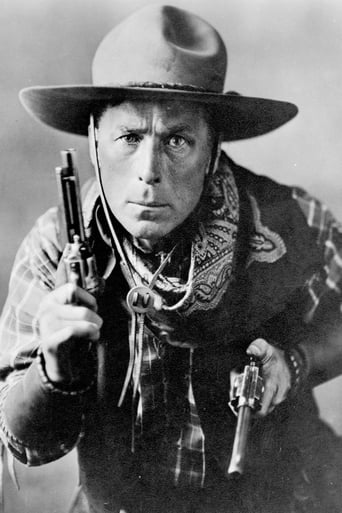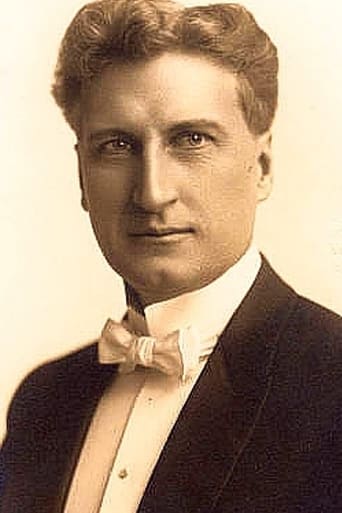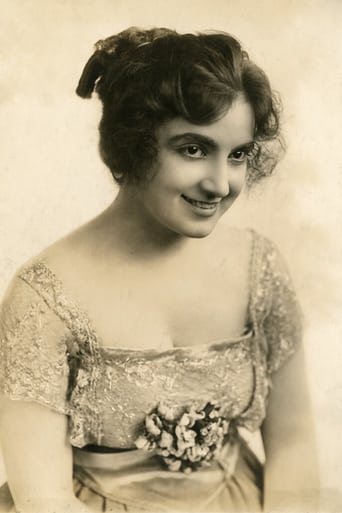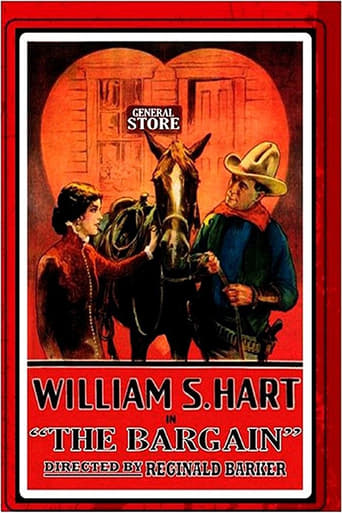
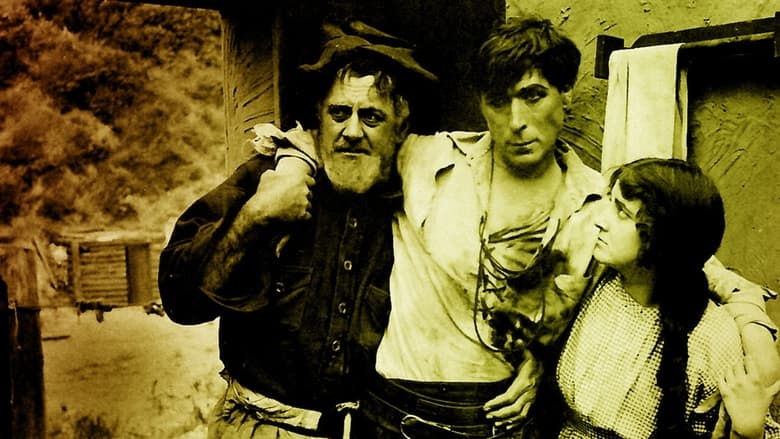
The Bargain (1914)
After the bandit Jim Stokes robs the stage he is wounded fleeing. Recuperating at a ranch, he falls in love with and marries the daughter. Now wishing to go straight he tries to return the money but is recognized and captured. When the Sheriff then loses the recovered money at a crooked roulette table, he and Stokes strike a bargain.
Watch Trailer
Cast


Reviews
Bargain, The (1914) ** 1/2 (out of 4)After robbing a stagecoach, bandit Jim Stokes (William S. Hart) is shot but manages to make it to a ranch where a woman (Clara Williams) nurses him back to health. Stokes decides to marry the woman and go straight so he returns the stolen money to the Sheriff (J. Frank Burke) but he ends up losing it gambling so he makes a bargain with the bandit to clear both of them. THE BARGAIN probably has more history than entertainment to it but if you're a fan of silent Westerns or Hart then it's still worth viewing. The movie is best remembered today for being an early Paramount picture from producer Thomas H. Ince. It's also remembered for being Hart's first feature-length film but that there is some of the problem with the film. It's funny to see that even at this early part of his career Hart has no problem playing the bad guy willing to turn good for love. I thought Hart was very believable in the part and he managed to work both the good and bad in the character. I've always enjoyed seeing Hart play the bad guy even if the "performance" doesn't have to be that strong. That terrific face of Hart's perfectly gets across the coldness of his characters and he also manages to tell quite a bit with his eyes. The sympathy comes out of his eyes and this is especially true during the sequences where he's trying to make the woman understand that he does want to go straight. Williams is also very good in her role. The character isn't written all that great but the actress manages to be charming and it's easy to see why Hart would fall for her. There's a few action pieces sprinkled throughout but the majority comes towards the end when Hart must go into action over the double-cross. At 70-minutes I think there's no enough story to fully carry the picture as it really doesn't seem more like a three-reeler that has been stretched to the max just to be sold as a "feature", which is something that was common around this period.
The 1914 New York Motion Picture version of "The Bargain" was not William S Hart's first film. The hardened theater actor starred in 2 other "flickers" that year. The first was "His Hour of Manhood" followed by "Jim Cameron's Wife". Both only 2 reels in length and starred who would be one of his favorite leading actresses Clara Williams. Shooting for "The Bargain" started on June.11, 1914 continuing until August 5th in the base of the Grand Canyon, by a small crew under direction of Reginald Barker. Apparently the heat was so fierce actor make-up melted inside their containers. After shooting, the crew went back to Inceville, completing the film using the nearby Topanga Canyon to match the canyon location footage. This movie convince producer and later long-time colleague Thomas Ince to put Hart under a short-term contract as an actor and director at $125.00 per week (good starting wage back then).
'The Bargain', a William S. Hart western, is one of the many thousands of silent films which survive only because of the U.S. government's 'paper prints' law, which seemed rather bizarre at the time, but in hindsight may indicate that the U.S. government know what they're doing after all. I'll describe the situation, and you can judge for yourself.In the late 19th century, when movie production companies first tried to copyright their films in the U.S., the Library of Congress stated that only artistic works published on PAPER could be registered for copyright. Movies, being photographed on celluloid, were ineligible. This seems rather a capricious ruling, but perhaps the LoC simply didn't want to accumulate cans of film stock ... which, in those days, were usually highly flammable nitrate-emulsion celluloid. (Although the LoC acquired plenty of nitrate films eventually.) This decision prompted many production companies to make special 'paper print' versions of their films, to be used solely for registering U.S. copyright and for storage in the Library of Congress. Essentially, a paper print reproduces the movie frame-by-frame on long paper streamers rather than celluloid filmstrips. Such prints cannot be projected, but can be bound into books and 'read'.The LoC's decision was borne out when those nitrate prints started to decompose. Many early movies -- including 'The Bargain' -- have no known surviving original film prints, and exist today only because the paper prints registered in the Library of Congress were eventually re-photographed onto acetate-emulsion (safety) film stock. Thank you, Uncle Sam.Unfortunately, some film producers weren't completely honest when registering their movies for copyright. I saw 'The Bargain' in October 2006 at the Cinema Muto festival in Sacile, Italy, where it was screened from an acetate print struck from the paper original. As much as I enjoyed this film, I was more interested in seeing another one which the festival programmers scheduled along with 'The Bargain', a film so rare that it isn't listed in IMDb yet: 'Marceline, the World-Renowned Clown of the N.Y. Hippodrome'. This purported to be the stage act of a famous European clown who was (among other things) Chaplin's mentor. To my great annoyance, the producers of that movie had only bothered to convert the first few frames of their nitrate filmstrip into a paper print for the copyright office ... so the programmers at Cinema Muto could only show us those opening frames, looped several times.SPOILERS AHEAD. 'The Bargain' was made early in William S. Hart's career, but shows his screen character firmly in place. Rather than playing a standard white-hat hero or black-hat varmint, Hart typically played corrupt characters who are reformed in the last reel, usually by the love of a good woman. Here, Jim Stokes (Hart) is a stagecoach robber who's wounded while stealing the express-company's money, but is saved by miner Phil Brent and his pretty daughter Nell. After Jim marries Nell, his past catches up with him ... in the form of sheriff Bud Walsh, determined to bring Jim to justice. Jim has conveniently saved the stolen money all this time, and now he claims that he intends to make restitution ... which I found unlikely, since he was last seen scarpering for the Mexican border when the sheriff caught up with him. Walsh confiscates the money, but manages to lose it while gambling on a crooked roulette wheel. He then offers Jim a bargain: if Jim steals the money back for the sheriff, he'll allow Jim and Nell to escape into Mexico, presumably to live happily ever after.I'm not much of a fan of westerns, but I found this one enjoyable. For once, Hart isn't the only morally ambiguous character: the sheriff who comes after him is just as crooked ... and stupid with it, since he manages to get snookered by a crooked wheel. Having blown the money at the roulette wheel, why didn't the sheriff simply claim that Jim had spent it before the sheriff captured him? The ending is rather contrived: since Walsh sets Jim free to rob the gambling house (with the understanding that Jim is to surrender the winnings to Walsh), there's nothing to prevent Jim from welshing on Walsh by keeping the money AND going free with Nell; because Jim honours the bargain, we accept that his reformation is genuine. I'll rate this intriguing early oater 7 out of 10.
William S. Hart had already honed his acting and Western credentials on the stage. "The Bargain" was his first feature-length film, and the basics of his usual formula are already present. Hart is the "good bad-man", who is reformed once in the presence of a pure woman. The prototype for the "good bad-man" had already been introduced to the screen by "Broncho Billy" Anderson, but from what I've seen from these two, Hart far surpassed his predecessor. It's easy to see why Hart was so successful; his acting is more restrained than that of the other players. (Clara Williams is okay, too, though, and starred in other Hart films.) His worn face allows him not to stare into nothing in an attempt to convey emotion, as others do here.There's crosscutting action, too, with outdoor shooting. At that time, filming outside is preferable for everyone: it's cheap for the studios, especially so with Westerns, and the camera is, theoretically, freed from the missing wall and cramped space of studio sets. The beautiful landscape is more prominent and overwhelming here than in later Hart pictures. Yet, oddly, the most virtuosic shot happens inside: a one-minute panorama within a saloon.


